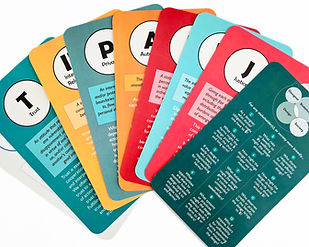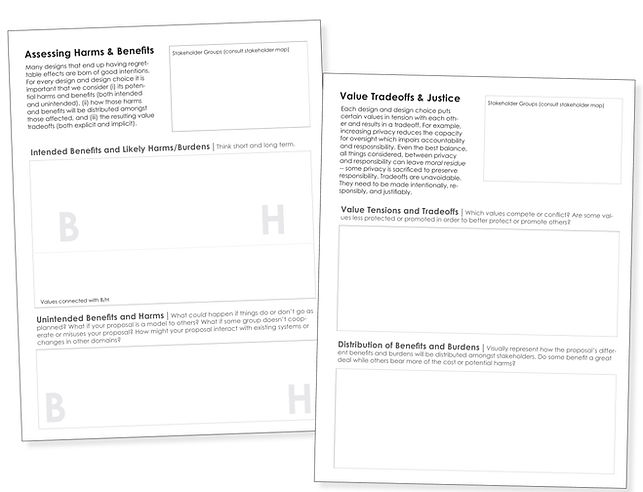Instructional Materials
These materials were developed as part of an ongoing interdisciplinary ethics curriculum building effort at Stanford's d.school. They are designed to introduce a shared vocabulary for talking about moral values in design (and other contexts), to help students identify and reflect on morally significant considerations in design choices, and to help them navigate ethical challenges and the difficult value tradeoffs they often entail.
Read about how these tools have been used in the classroom.
The Moral Values Deck
A deck of eight cards each of which contains a definition, related moral considerations, and guide questions about a particular moral value. Used to scaffold ethical reflection and impact assessment for designs, technologies, and policies. Includes two DIY cards so students can expand the deck based on their own value systems.


Moral Values Map
Visual guide to interrelationships between common moral values. Includes questions to guide moral reflection and assess the ethical impact of design projects, technologies, and policies. Students are encouraged to make their own values map, especially for projects involving stakeholders whose value systems may differ from their own.

Values Impact Assessment Tool
A resource to assist design students in developing Ethics Statements for project proposals. Students are encouraged to empathetically imagine the experiences of stakeholders who interact with their design both when it goes as planned and when it goes...awry. The aim is to consider which values are impacted by the design and how, which values are in tension and trading off, and to determine how the benefits and harms of the design fall on different stakeholders.
